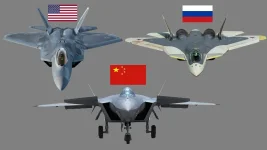- Views: 2K
- Replies: 15

Abhijit Iyer-Mitra, a Senior Fellow at the Institute of Peace and Conflict Studies (IPCS), has challenged China's claims of mastering fifth-generation (5G) fighter jet technology.
Speaking on defence economics and technology, Iyer-Mitra highlighted technical shortcomings in Chinese aviation advancements, drawing comparisons with India's own challenges in military technology.
Iyer-Mitra argued that while China showcases its J-20 and FC-31 (also known as the Gyrfalcon) as 5th generation fighters, these aircraft suffer from significant engine issues, particularly "huge engine bleed." This refers to inefficiencies in engine design where air leakage impacts performance, a critical factor for stealth capabilities and overall aircraft maneuverability.
He further criticized the Chinese approach to "full spectrum signature management," suggesting that the technology to minimize detection across various spectra (radar, infrared, acoustic, visual, etc.) is not fully integrated into their aircraft designs. Signature management is crucial for stealth aircraft to reduce their detectability, making Iyer-Mitra's critique significant in assessing the true combat effectiveness of these jets.
Acknowledging India's own challenges, Iyer-Mitra humorously remarked, "India hasn't even mastered 4G." This comment reflects on India's slower progress in developing advanced fighter jets like the Tejas LCA, which has faced developmental hurdles and is often considered a 4th or 4.5th generation aircraft.
Looking ahead, Iyer-Mitra emphasized that true 6th generation (6G) technology goes beyond aesthetics and futuristic shapes. He stressed that next-generation aviation technology hinges on advanced materials, AI integration, network-centric warfare capabilities, and, crucially, advancements in propulsion and sensor technology not readily visible. This "under the skin" approach to 6th generation fighters would encompass innovations like laser weapons, hypersonic capabilities, and enhanced survivability through smart materials and adaptive camouflage.
Iyer-Mitra's observations suggest a need for both China and India to prioritize foundational technologies over external features in their military hardware. For India, this critique serves as a call to accelerate research in stealth technologies, propulsion systems, and electronic warfare. For China, it's a reminder to refine its industrial processes and technological integration to truly compete on a global scale with nations like the US, which lead in stealth technology.

